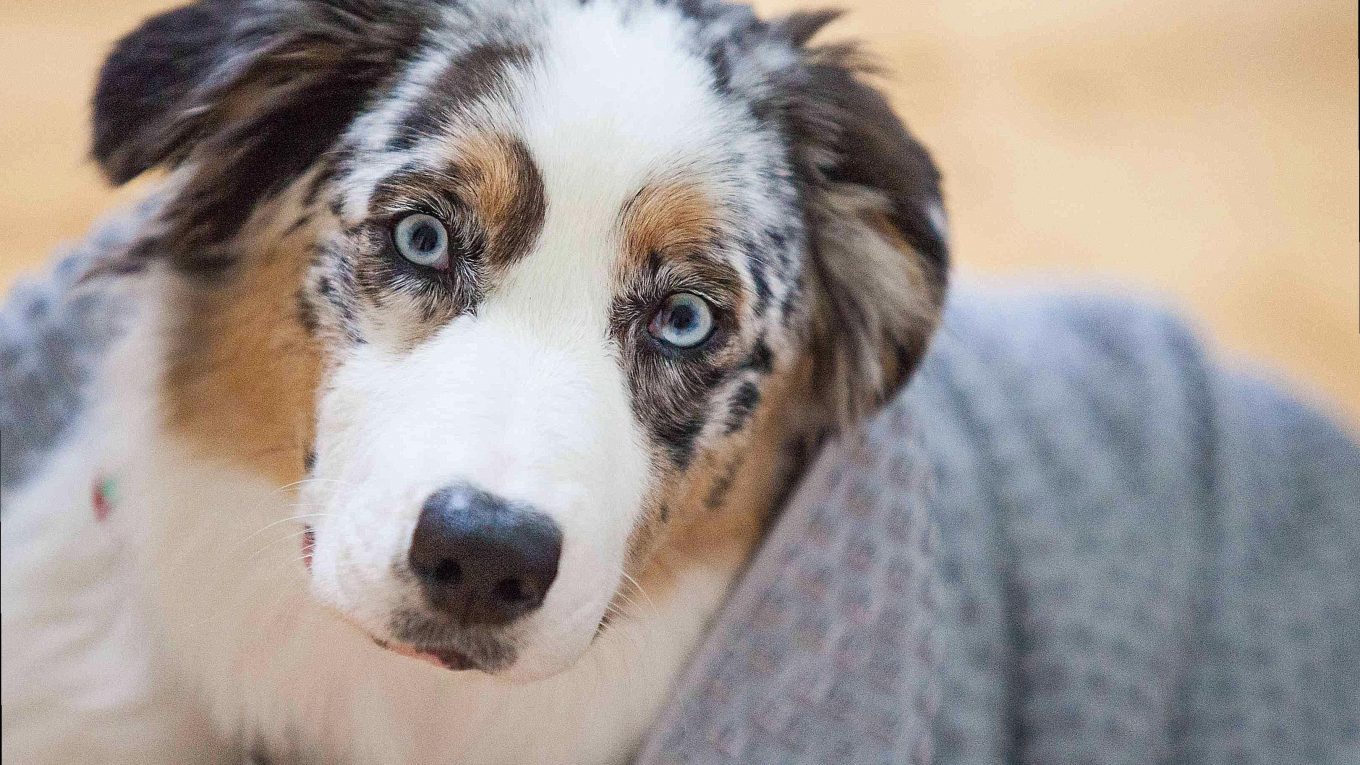Do Dogs Grow Out Of Blue Eyes?
They say the eyes are the windows to the soul, and when it comes to our furry companions, this sentiment couldn’t be more true. Most dogs rock those classic brown or amber eyes that melt our hearts, but some pups enter this world with a pair of blue peepers that can make us weak at the knees. Now, here’s the million-dollar question: do dogs ever grow out of those mesmerizing blue eyes?
In this captivating exploration, we’re going to dive headfirst into the enchanting world of blue eyes in dogs. We’ll uncover the secrets behind their unique coloration, explore how it might affect our four-legged friends, and uncover whether those baby blues eventually fade away. And hey, we’ll even throw in some potential solutions for all you dog lovers out there.
So buckle up and get ready for an adventure through the whimsical realm of blue-eyed pups. From their origins to their potential evolution as they grow older, we’re about to embark on a journey that will leave you marveling at nature’s wonders like never before.
Do dogs grow out of blue eyes
Contents [show]
Many dog lovers are captivated by the stunning blue eyes seen in certain breeds, such as Siberian Huskies and Australian Shepherds. But what about French Bulldogs? Can they have blue eyes too? And do these blue-eyed pups grow out of their striking eye color as they mature? In this blog post, we will explore the fascinating process of eye color development in dogs, shedding light on why some French Bulldogs may keep their blue eyes while others undergo a change.
Eye Color Development in Dogs:
The color of a dog’s eyes is determined by the amount of melanin present in the iris, which is responsible for pigmentation in the skin, hair, and eyes. Puppies are often born with blue eyes due to a lack of melanin, but as they grow older, the production of melanin increases, leading to a change in eye color.
Timing and Variability:
While the exact age at which a dog’s eye color stabilizes can vary, most puppies start showing signs of eye color change within the first few weeks or months of life. For some French Bulldogs, this may mean watching their blue eyes gradually fade and be replaced by shades of brown, amber, green, or a variation thereof. However, it is important to note that not all dogs with blue eyes will undergo this change. Some lucky individuals retain their mesmerizing blue eyes throughout their lives.
Genetic Factors:
The complex genetics behind eye color development in dogs play a significant role in determining whether a French Bulldog will grow out of their blue eyes or keep them into adulthood. Certain gene combinations may predispose a dog to have blue eyes that eventually change, while others may make it more likely for their eye color to remain constant.
Health Considerations:
It is crucial for dog owners to understand that changes in eye color do not typically indicate any underlying health issues. However, if there are any concerns about a French Bulldog’s eyes or vision, it is always recommended to consult a veterinarian for a proper evaluation.
Common Breeds with Blue Eyes
While French Bulldogs are not typically known for having blue eyes, it’s always interesting to explore the possibilities within different breeds. In this section, we will discuss common breeds that often have blue eyes and provide information on whether French Bulldogs can possess this mesmerizing eye color.
Common Breeds with Blue Eyes:
Siberian Husky:
Siberian Huskies are renowned for their striking blue eyes, which enhance their majestic appearance. These beautiful dogs have a thick coat and a strong resemblance to their wolf ancestors. While French Bulldogs and Huskies may seem like polar opposites, it’s important to remember that genetics can be unpredictable, and there have been rare cases of French Bulldogs with blue eyes.
Australian Shepherd:
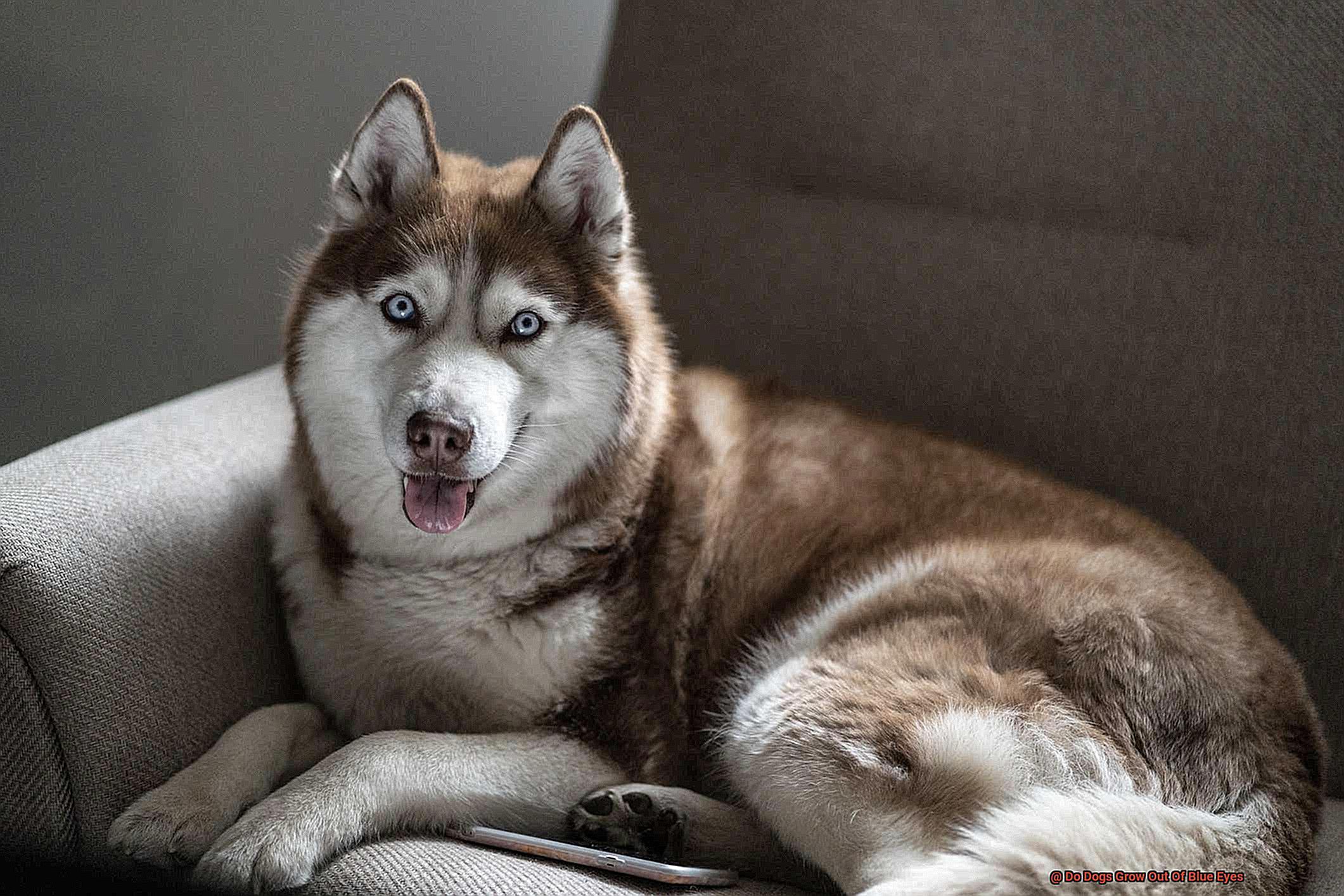
Australian Shepherds are another breed that commonly has blue eyes. Known for their intelligence and agility, these dogs can possess a wide range of eye colors, including blue. Although it’s not as common as in other breeds, there have been occasional reports of French Bulldogs with blue eyes, which may be influenced by the Australian Shepherd ancestry in some pedigrees.
Border Collie:
Border Collies are highly intelligent and energetic dogs that often captivate us with their piercing blue eyes. While it’s uncommon to find French Bulldogs with blue eyes, genetic variations can occur due to mixed breeding or distant ancestral links. It’s essential to note that breeding for blue eyes specifically in French Bulldogs is not recommended as it may lead to health issues.
Other Breeds with Blue Eyes:
While Siberian Huskies, Australian Shepherds, and Border Collies are the most commonly associated breeds with blue eyes, other breeds may also occasionally exhibit this trait. These include the Dalmatian, Weimaraner, and Catahoula Leopard Dog. However, it’s crucial to remember that blue eyes are not a defining characteristic of these breeds, and individual variation can occur within each breed.
Conclusion:
While French Bulldogs are not typically known for having blue eyes, it’s always fascinating to ponder the possibilities within different breeds. While it’s rare to find a French Bulldog with blue eyes, genetic variations can occur due to ancestral influences or mixed breeding. However, it’s important to prioritize the health and well-being of your French Bulldog over specific traits like eye color. Remember, the most important thing is to provide your furry friend with love, care, and attention, regardless of their eye color.
The Science Behind Blue Eyes in Dogs
French Bulldogs are known for their adorable bat-like ears and expressive eyes. While most Frenchies have dark brown eyes, there are rare cases where these lovable pups have captivating blue eyes. Have you ever wondered why some French Bulldogs have such unique eye colors? Let’s dive into the fascinating science behind blue eyes in dogs.
The Dilution Gene: The Culprit behind Blue Eyes
Blue eyes in dogs, including French Bulldogs, are caused by a genetic mutation that affects the production of pigment called melanin in the iris. This mutation is controlled by a gene known as the “dilution gene” or the “D gene.” When this gene is present, it dilutes the color of the iris, resulting in beautiful blue eyes.
Inherited in an Unpredictable Manner
The dilution gene works its magic in an autosomal recessive manner. This means that both parents must carry the gene for a French Bulldog puppy to have blue eyes. If only one parent carries the gene, the outcome may be different, and the puppies may have other eye colors.
Beyond Eye Color: Coat Color Patterns
Interestingly, dogs with blue eyes often have other coat color variations, such as merle or white. These coat color patterns are also associated with the same dilution gene responsible for blue eyes. It’s like winning the genetic lottery.
The Intricacies of Melanin Production
While we know that the dilution gene affects melanin production in the iris, the exact mechanism behind this process is not fully understood. Scientists believe that this gene interferes with the maturation and migration of melanocytes, which are responsible for producing melanin.
Vision Problems: Not Always a Guarantee
Contrary to popular belief, not all dogs with blue eyes have vision problems. While some blue-eyed dogs may be more prone to certain eye conditions, such as cataracts or progressive retinal atrophy, it’s not a guarantee. Regular eye check-ups with a veterinarian are essential to monitor any changes or abnormalities in your Frenchie’s eye health.
The Changing Kaleidoscope: Puppies and Eye Color
If you’re a proud French Bulldog puppy parent, you might have noticed that their eye color changes as they grow older. This happens because the amount of melanin in their irises increases over time, resulting in a change in eye color. The age at which puppies’ eye color stabilizes varies between breeds and individuals, so don’t worry if it takes some time for those blue eyes to settle in.
Embrace the Uniqueness
French Bulldogs with blue eyes are undeniably unique and captivating. While not commonly seen in this breed, they remind us of the wonder of genetics. However, it’s important to remember that health and well-being always come first. If your Frenchie’s eye color suddenly changes or if there are any signs of discomfort or vision problems, consult a veterinarian for further evaluation.
When Do Puppies’ Eye Colors Start to Change?
One of the most adorable moments in a puppy’s development is when their eyes start to open, allowing us a glimpse into their world. But what about their eye color? When do those captivating blue eyes start to change? As an expert in French Bulldogs, I have firsthand experience with this question and can provide valuable insights.
The Journey Begins: Opening Their Eyes
Puppies are born with closed eyelids, relying solely on their sense of touch and smell. Around 10-14 days of age, their eyes gradually begin to open, revealing the world around them. At this stage, most puppies have blue eyes, which is a result of the lack of pigmentation in their irises.
The Color Transformation
As puppies grow and develop, their eye color may start to change. The process of eye color changing can vary depending on the breed and genetics. In some cases, puppies’ eye color may begin to transform as early as 6-8 weeks of age. However, it is not uncommon for the changes to continue until they are around 12 weeks old or even longer.
The Role of Melanin
The final eye color of a puppy is determined by the amount and distribution of melanin pigment in the iris. Melanin production increases with age, leading to the development of darker pigmentation in the iris. This is why puppies with blue eyes often see their eyes transition into shades of brown, green, or hazel as they mature.
Exceptions to the Rule
It is important to note that not all puppies’ eye colors change. Some puppies may retain their blue eyes throughout their lives, especially in breeds that are more prone to blue or light-colored eyes like Huskies or Australian Shepherds. These unique eye colors add to the charm and individuality of these breeds.
External Influences
The rate at which puppies’ eye colors change can be influenced by external factors as well. Exposure to sunlight or certain medications may affect the pigmentation process. It’s crucial to protect your puppy’s eyes from excessive sunlight and consult with a veterinarian regarding any concerns about medications.
Embracing the Journey
Watching your puppy’s eye color change is a fascinating journey. Embrace the transformation and enjoy the unique beauty that comes with it. Remember, the most important thing is to prioritize your puppy’s health and well-being throughout the process.
Factors That Influence Eye Color Development
Those adorable blue eyes that puppies are often born with can leave you wondering what color they will end up being as they grow older. If you’re a proud French Bulldog owner or considering bringing one into your family, here’s what you need to know about the factors that influence their eye color development.
- Genetics – The primary influencer: Just like in humans, genetics play a significant role in determining eye color in French Bulldogs. The combination of genes inherited from their parents will determine the color of their eyes. If both parents have blue eyes, there’s a higher chance that their puppies will have blue eyes too. However, it’s essential to remember that genetics can be complex, so eye color outcomes may vary.
- The magic of age: As your French Bulldog puppy grows, their eye color can change. Those gorgeous blue eyes they had as a puppy may gradually transform into shades of brown, green, or hazel. This is because the pigmentation in the iris develops over time. So don’t be surprised if your puppy’s eye color changes as they mature into adulthood.
- Melanin matters: Melanin, the pigment responsible for eye color, also plays a significant role in French Bulldog eye color development. A higher concentration of melanin will result in darker-colored eyes, while a lower concentration will produce lighter-colored eyes. The production of melanin can be influenced by genetics and hormonal changes during development.
- Breed tendencies: Different dog breeds have different tendencies when it comes to eye color. While French Bulldogs are not typically known for having striking blue eyes like Huskies, they can still have a range of beautiful eye colors. It’s important to keep breed tendencies in mind when considering what eye color your French Bulldog might develop.
- Environmental influences: Although genetics are the main influencer, environmental factors can also play a role in eye color development. Exposure to sunlight and UV radiation can affect melanin production in the iris and potentially alter eye color to some extent. However, these changes are usually minimal and may not be noticeable in most cases.
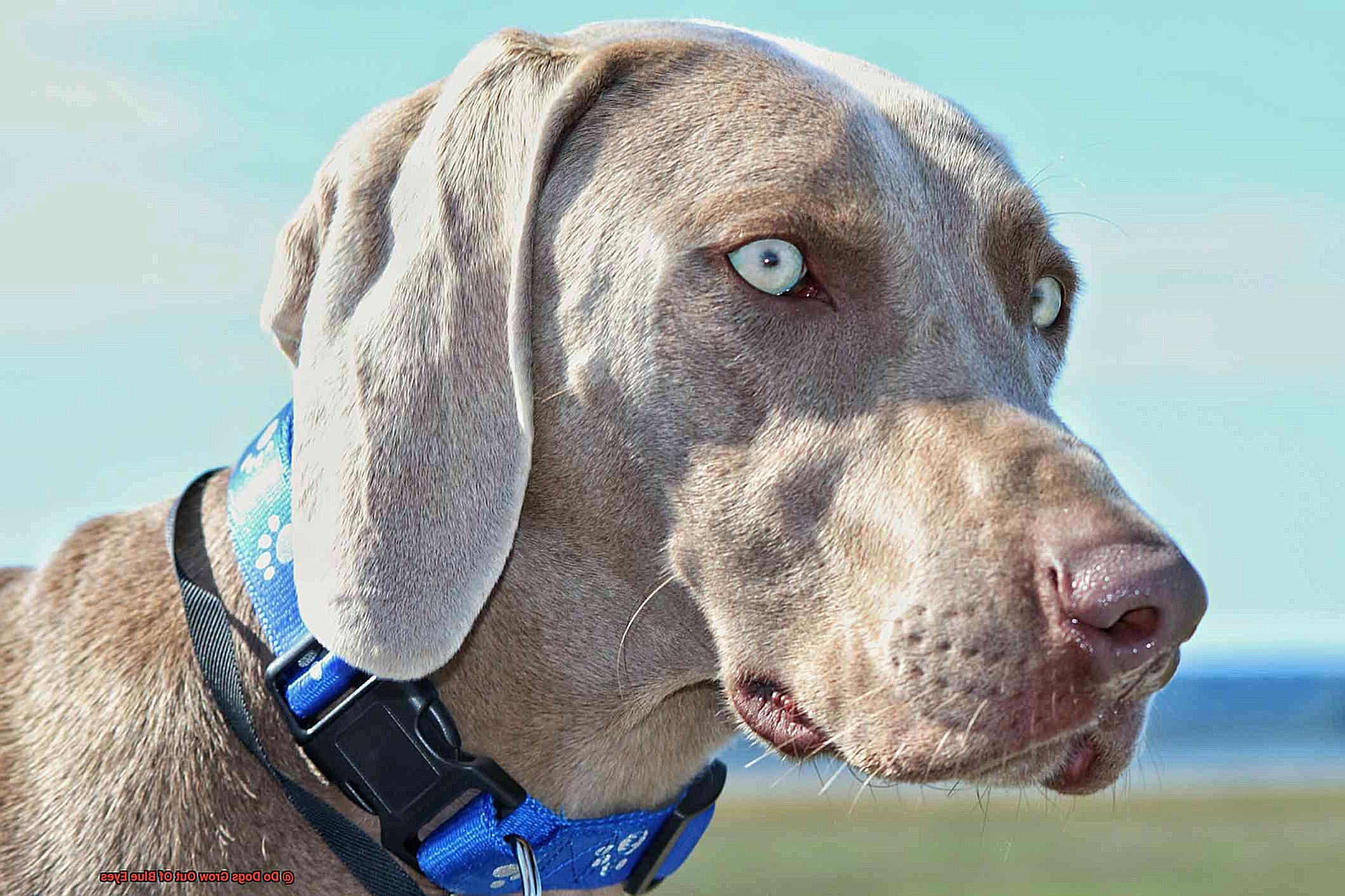
Remember, each French Bulldog is unique, and their eye color may not follow predictable patterns. It’s always best to consult with a veterinarian or a reputable breeder for more specific information about your French Bulldog’s eye color development.
What Colors Do Dogs’ Eyes Usually Change To?
The enchanting world of dog eye colors. As a French Bulldog owner, you may have noticed that your furry friend’s eyes are like windows to their soul. But have you ever wondered what colors their eyes might change to as they age? Join us on this magical journey as we explore the fascinating world of French Bulldog eye color development.
Puppy Blues:
When your French Bulldog puppy first opens its eyes, you might be greeted with a pair of beautiful blue orbs. This is because puppies are born with low levels of melanin, the pigment responsible for determining eye color. As they grow older, their melanin production increases, leading to potential changes in eye color.
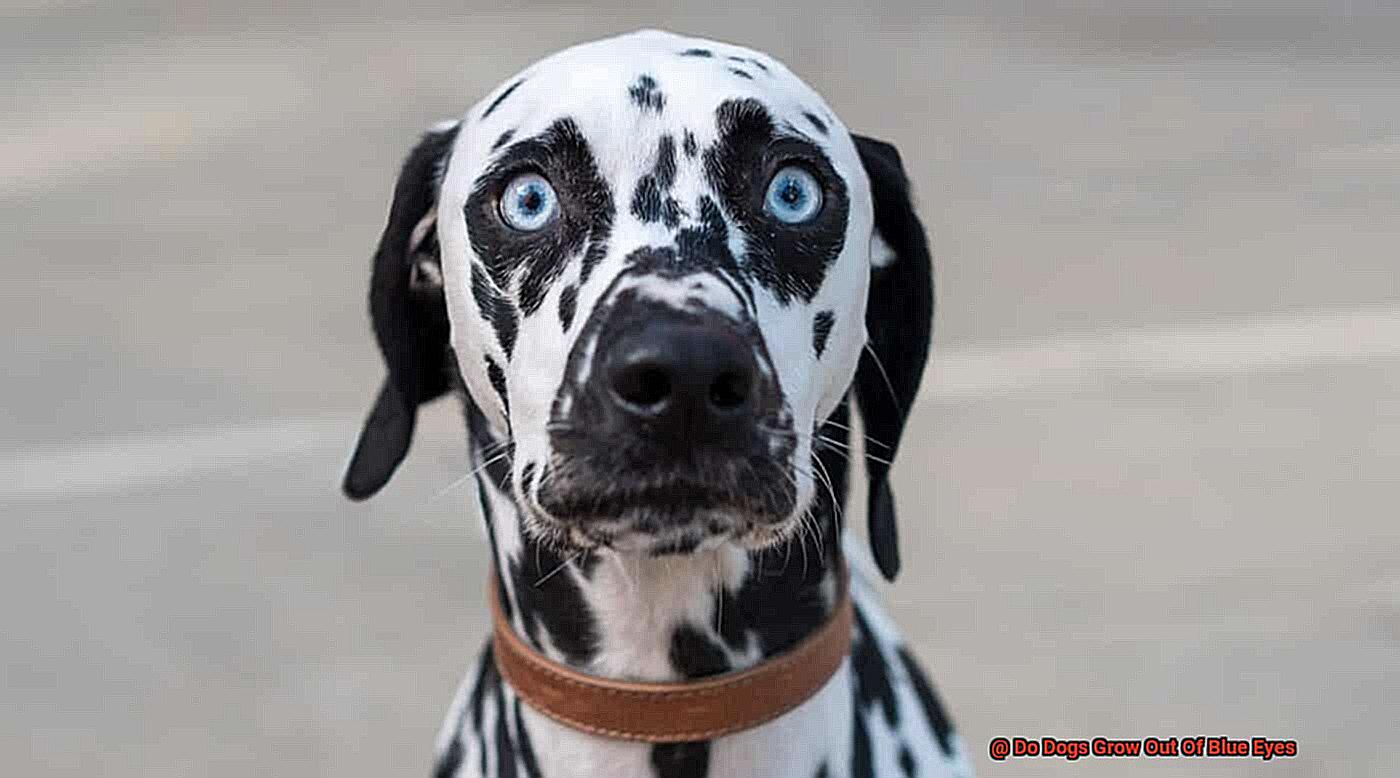
The Usual Suspects:
In most cases, adult French Bulldogs’ eyes will transition to shades of brown, amber, or various hues of hazel. These colors result from the higher levels of melanin present in the iris. So don’t be surprised if those adorable blue eyes give way to warm and earthy tones as your pup matures.
Exceptions to the Rule:
However, there are always exceptions to every rule. Some French Bulldogs may retain their blue eye color even into adulthood. This is especially common in certain breeds like Siberian Huskies and Australian Shepherds. These dogs have a genetic variation that affects melanin production or distribution in the iris, resulting in those striking blue eyes that melt hearts.
The Waiting Game:
The age at which a French Bulldog’s eye color stabilizes can vary. In some cases, it may take several months or even up to a year for the final eye color to develop fully. So be patient and enjoy the journey as your pup’s eyes transform into their unique shade.
Genetics and Beyond:
While age and melanin play significant roles in eye color development, other factors such as coat color genetics and breed-specific traits can influence the likelihood of a French Bulldog’s eye color changing. So, if your Frenchie has a particular coat color or comes from a specific breed line, it may impact their eye color transformation.
When to Seek Help:
While most eye color changes are natural and harmless, sudden changes or cloudiness in your adult French Bulldog’s eyes could indicate an underlying health issue. Conditions like cataracts or glaucoma may be the culprit. If you notice any concerning changes, it’s best to consult a veterinarian for a proper diagnosis and guidance.
Is It Normal for Dogs to Retain Their Blue Eyes?
These adorable little pups capture our hearts with their expressive eyes, and it’s no wonder we’re curious about what color they’ll end up with. While blue eyes are common in certain breeds, like Siberian Huskies, Australian Shepherds, and Border Collies, French Bulldogs can also sport this captivating shade. However, it’s important to understand that not all dogs will retain their blue eyes into adulthood. In this article, we’ll explore why this happens and what you can expect as a proud French Bulldog owner.
The Journey of Eye Color:
Just like a caterpillar transforming into a butterfly, a French Bulldog’s eye color undergoes a magical journey as they grow. At birth, many puppies have blue eyes due to a lack of pigmentation in their irises. As they mature, the production of melanin kicks in, resulting in a shift in eye color. Some puppies’ eyes settle into different shades, such as brown or amber, while others retain their enchanting blue hue. The age at which a puppy’s eye color stabilizes can vary, with some puppies showing their true colors around 8 weeks and others taking several months.
Exceptions to the Rule:
While it’s more common for French Bulldogs to transition from blue eyes to another color as they mature, there are exceptions to this rule. Some lucky pups will keep their mesmerizing blue eyes throughout their lives. This is perfectly normal and doesn’t indicate any health issues or problems. It’s simply a result of genetics and pigmentation. So, if you find yourself gazing into your French Bulldog’s irresistible blue eyes even when they’re all grown up, consider yourself fortunate.
Consulting the Experts:
As a responsible French Bulldog owner, it’s important to keep an eye on your pup’s eye health. While retaining blue eyes is generally not a cause for concern, sudden changes in eye color or the presence of other concerning symptoms should prompt a visit to your veterinarian. They can provide a proper evaluation and offer guidance, ensuring your furry friend’s overall well-being.
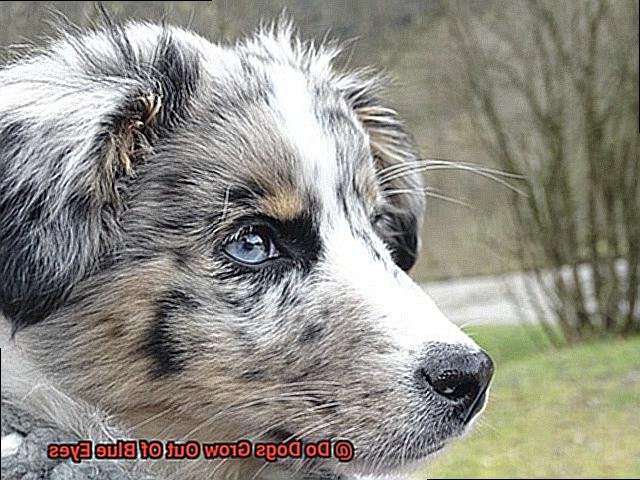
Can Eye Color Change Be Controlled or Influenced?
Have you ever wondered if you could control or influence your French Bulldog’s eye color? Well, we’re here to shed some light on this intriguing topic. While it may be tempting to think that you can change your dog’s eye color through external means, such as diet or environment, the truth is that eye color in dogs, including French Bulldogs, is primarily determined by genetics and natural developmental processes.
Understanding the Science behind Eye Color
Eye color in dogs is primarily determined by the amount and distribution of melanin in the iris, which is the colored part of the eye. Blue eyes in dogs, including French Bulldogs, are caused by a lack of melanin in the iris. This lack of melanin allows light to reflect off the back of the eye, giving it a blue appearance. However, not all dogs with blue eyes will retain this eye color throughout their lives. Eye color can change as the dog grows older and their melanin production increases.
The Complex Development of Eye Color in Puppies
The development of eye color in puppies is a fascinating and complex process. Some puppies are born with blue eyes, but their eye color may change as they mature. This change typically occurs between 6 to 12 weeks of age, although the exact timing can vary between individual dogs and breeds. It is more common for puppies of certain breeds, such as Siberian Huskies or Australian Shepherds, to have blue eyes that later change to another color.
Nature vs. Nurture: Can You Control or Influence Eye Color?
While it may be tempting to try and control or influence your French Bulldog’s eye color, there is no proven method to do so through external means such as diet or environmental factors. Eye color is primarily determined by genetics and natural developmental processes. Instead of focusing on altering eye color, it is crucial for dog owners to prioritize providing proper care, nutrition, and regular veterinary check-ups for their furry companions.
Health Implications of Retaining Blue Eyes
If you’re a proud owner of a French Bulldog with mesmerizing blue eyes, you might find yourself swooning over their captivating gaze. But did you know that there are potential health implications associated with retaining those beautiful blue peepers? Let’s dive into the world of blue-eyed French Bulldogs and explore the risks you should be aware of to ensure your furry friend stays happy and healthy.
Increased Risk of Eye Conditions
One major concern with blue eyes in dogs, including French Bulldogs, is the heightened likelihood of developing certain eye conditions. Dogs with blue eyes are more prone to conditions such as cataracts, glaucoma, and progressive retinal atrophy (PRA). These conditions can lead to impaired vision or even blindness if left untreated.
Cataracts: Clouding of the Lens
Cataracts occur when the lens in the eye becomes cloudy, resulting in impaired vision or blindness. Blue-eyed dogs have a higher risk of developing cataracts compared to those with darker-colored eyes. Regular eye check-ups with your veterinarian can help catch cataracts early and determine the best course of action.
Glaucoma: Increased Eye Pressure
Glaucoma is another condition that may affect dogs with blue eyes more frequently. It occurs when there is increased pressure within the eye, leading to damage to the optic nerve and potential vision loss. Monitoring your dog’s eye pressure and seeking veterinary care if any symptoms arise is crucial for early detection and management.
Progressive Retinal Atrophy (PRA): Gradual Vision Loss
PRA is a degenerative condition that causes the gradual loss of vision over time. It affects the retina, leading to night blindness and eventually complete blindness. Some studies have suggested a correlation between blue-eyed dogs and an increased risk of PRA. Regular eye exams can help identify any signs of PRA early on and allow for appropriate intervention.
Sun Sensitivity and Skin Conditions
Blue-eyed dogs, including French Bulldogs, are more susceptible to sun damage due to their lighter pigmentation in the iris. Their eyes have less protective pigmentation, making them more prone to conditions such as photokeratitis or sunburned eyes. Additionally, their lighter skin may be at a higher risk of sunburns on areas with thin or sparsely haired skin, like the nose or ears.
How to Protect Your Blue-Eyed French Bulldog
While there are potential health risks associated with retaining blue eyes in French Bulldogs, there are steps you can take to minimize these risks and keep your furry friend healthy:
- Regular Veterinary Check-ups: Schedule routine eye exams to monitor your dog’s eye health and catch any issues early.
- Eye Protection: Shield your dog’s eyes from excessive sun exposure by using doggy sunglasses or seeking shade during peak sun hours.
Conclusion
In conclusion, it is a common misconception that dogs grow out of blue eyes as they age.
However, this is not the case. Blue-eyed dogs will typically maintain their eye color throughout their lives.
Don’t let anyone tell you otherwise.
